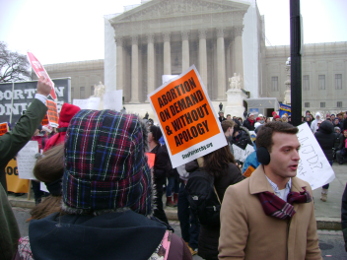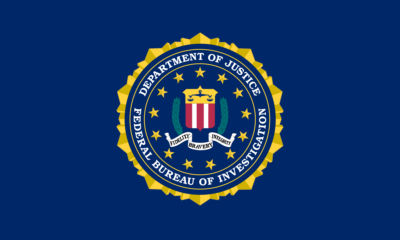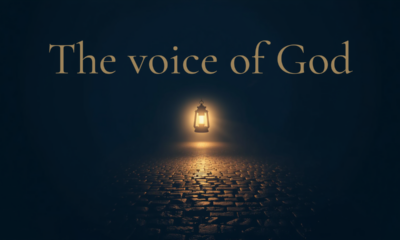Guest Columns
The Constitution and a tyrannical Court

Are we in danger of losing our constitutional form of government – the government the Constitution gave us? Or have we already lost it?
Constitutional government, not democracy
The U.S. Constitution is a contract purposefully drafted by students of history who understood the wrongs imposed on people by despots. So they created a representative government, not a democracy, with limited powers. They believed governments closest to the people, those of the towns and states in which they lived, were better able to be controlled. For that reason, they carefully crafted the federal government only to do those things necessary as a nation like provide for protection through armed services, provide for control of interstate commerce, and raise taxes to support those functions among other things.
Democracy was to be avoided because, as had been shown by history, it sometimes resulted in subjugating a minority. With the main governing body made up of representatives of the people there could be more control over the actions of the government. If the representatives were un-representative, they could simply be removed from office and replaced.
No I&R – deliberately
It is interesting to note that the processes of Initiatives or Referendums are not provided for in the U.S. Constitution. There are therefore no provisions for a democracy (a rule by the people), instead the rule is by representatives of the people. Initiatives and Referendums are dangerous, because they can result in a tyranny of the majority. They were progressive ideas and the earliest were adopted by Oregon in 1902.
Separation of powers
The drafters of the Constitution began by establishing the three branches of government with Article I, the most important, setting up Congress with a Senate and a House of Representatives. Article II established the office of President with provisions for carrying out the laws enacted by Congress. Then, in Article III, provision is made for a Supreme Court whose members are appointed by the President, with the “advice and consent of the Senate”.
Much is made of the issue of “checks and balances” in this constitutional scheme to assure that each of the branches carries out its duties and does not usurp the authority of any other branch. For example, the President can be “checked and balanced” by Congress if he or she gets carried away and thinks he or she can act like a king or queen, the very form of government the colonies fought to break away from in the revolutionary war. Likewise, the Congress can be “checked and balanced” by the President with a veto of the legislation passed by the representatives if acting in a tyrannical manner which can only be overridden by a two-thirds vote in the Senate and House of Representatives.
Checks and balances on the Supreme Court
So how was the Supreme Court to be “checked and balanced” and by which branch of government? One way was the President simply not paying attention to the decision of the Court when he or she thought it was wrong. It happened twice in our history with President Andrew Jackson stating about the chief justice of the Court, “John Marshall has made his decree. Now let him enforce it.”
If one wonders how that would be possible, you should remind yourself of the structure of the federal government. What is the enforcement arm of the federal government? It is the United States Marshall’s office which is under the executive branch controlled by the President. If the President does not tell the Marshall’s office to act, there would be no enforcement.
Additionally, Congress has the power of impeachment which can be used to remove a Supreme Court judge or judges from their position(s). In fact, this was clearly considered by the drafters as Alexander Hamilton writes about it in the Federalist Papers, those documents written to convince the people to ratify the Constitution. (The Federalist, No. 81)
Good behavior
How could the members of the Court be impeached and on what basis? Contrary to popular belief the judges of the Court are not appointed for life. The Constitution clearly states that they shall “hold their Offices during good behaviour”. What does that mean? It certainly would not be for the Court to decide the meaning because they could then set the bar so high nothing could ever result in “bad behavior” and regardless of the Court’s actions no judge or judges could ever be removed.
It would fall to the representatives of the people, Congress, to agree that what the judge or judges did was not “good behavior”. Is a violation of the constitutional principles as established by the contract enough to constitute “bad behavior”? Is it enough for the Court to create rights by the misinterpretation of words or phrases in the Constitution or by actually creating words or phrases not found therein in violation of the right of the people to change the document through their elected representatives by amendment under Article V? How else could the Court be “checked and balanced” under the scheme our founders thought they were establishing? Could it not otherwise allow that branch of the government to usurp the power and authority of the other branches and become the absolute ruler of the country?
The Court cannot (or should not) amend the Constitution
Another “check and balance” on the Court having such absolute authority is that a contract cannot be changed other than by the agreement of the parties to that contract. For that reason, Article V provides a procedure for the amendment of the Constitution. Only the people have the right to have the Constitution amended through proposals by their elected representatives and a ratification process. How did the Court have the authority to amend the Constitution when it was not a party to that contract? It was created by it. Therefore, the Court does not have that authority and it was a violation of the principles of the contract for them in a decision to give themselves that authority.
For that reason, the Court has become a tyrannical ruler of our country. It has done enough damage to our country through its decisions and some action must be taken by the legislative or executive branch of the federal government as the elected representatives of the people before more decisions contrary to the principles on which this country was founded happen. For this to occur, people must contact their elected officials and require that they act.
Why don’t law teachers, civics teachers, or the media want you to know about this danger? Is it because some do not want you alerted to the tyranny that can result, or has, resulted?
For more information go to https://www.criticalbookspublications.com. See my new book, The Tyrannical Rule of the U.S. Supreme Court.
-

 Executive1 day ago
Executive1 day agoFBI Raided Secret Service Agent’s Home in Tax Fraud Probe
-

 Executive4 days ago
Executive4 days agoTrump Ditches ‘The Weave,’ Delivers Sales Pitch Susie Wiles Asked For
-

 Executive4 days ago
Executive4 days agoJudge Green-Lights Secret Service Agent’s Retaliation Case
-

 Executive4 days ago
Executive4 days agoWaste of the Day: Outlays Per Person Up Nearly 100X Since 1916
-

 Christianity Today3 days ago
Christianity Today3 days agoYou Must Know His Voice – Powerful Video
-

 Guest Columns3 days ago
Guest Columns3 days agoBlood on the Sand: Australian Massacre Exposes Hollow Core of Anti-Zionism
-

 Civilization2 days ago
Civilization2 days agoWork, Welfare, and the Illusion of a New Eden
-

 Civilization2 days ago
Civilization2 days agoTrump National Security Strategy Mirrors Trump World








